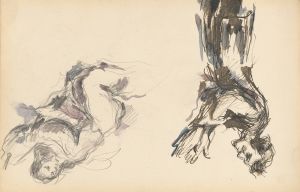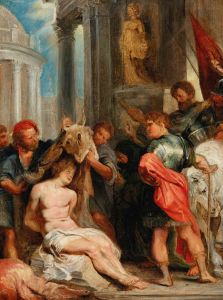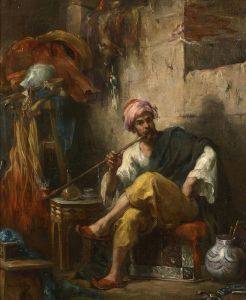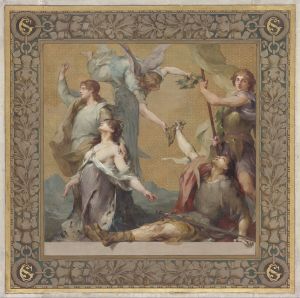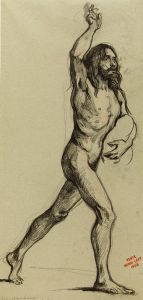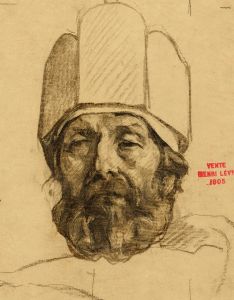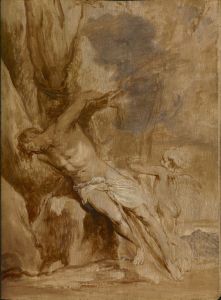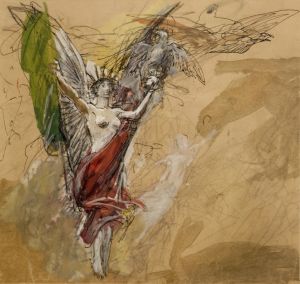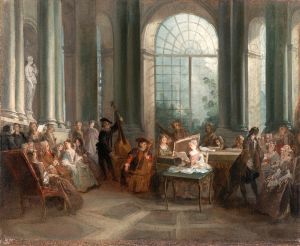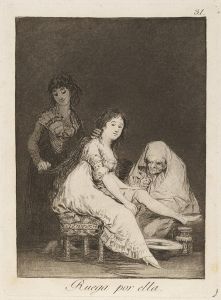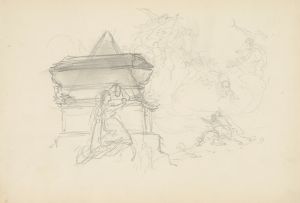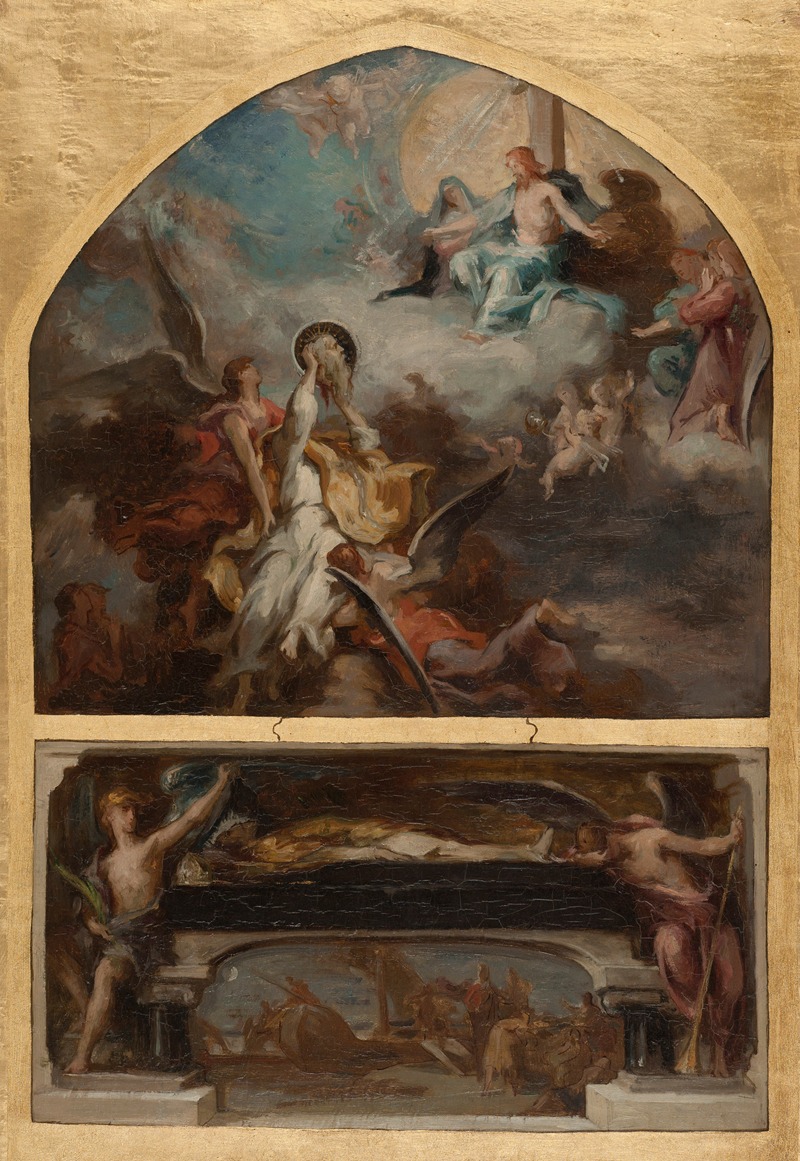
Résurrection et Apothéose de saint Denis
A hand-painted replica of Henri Leopold Lévy’s masterpiece Résurrection et Apothéose de saint Denis, meticulously crafted by professional artists to capture the true essence of the original. Each piece is created with museum-quality canvas and rare mineral pigments, carefully painted by experienced artists with delicate brushstrokes and rich, layered colors to perfectly recreate the texture of the original artwork. Unlike machine-printed reproductions, this hand-painted version brings the painting to life, infused with the artist’s emotions and skill in every stroke. Whether for personal collection or home decoration, it instantly elevates the artistic atmosphere of any space.
Henri Léopold Lévy was a French painter known for his works that often depicted religious and historical themes. One of his notable paintings is "Résurrection et Apothéose de saint Denis," which translates to "Resurrection and Apotheosis of Saint Denis." This painting is a significant representation of Lévy's style and thematic focus, capturing a moment from the life of Saint Denis, a revered Christian martyr and the patron saint of France.
Saint Denis was a third-century Christian martyr and the first bishop of Paris. According to legend, he was beheaded during the Roman persecution of Christians and is said to have picked up his head and walked several miles, preaching a sermon the entire way. This miraculous event is a popular subject in Christian art, symbolizing faith and divine intervention.
Lévy's painting captures the dramatic and spiritual essence of Saint Denis's story. The term "résurrection" in the title refers to the saint's miraculous survival after decapitation, while "apothéose" suggests his elevation to sainthood and his revered status in the Christian tradition. Lévy's work is known for its detailed and expressive portrayal of religious figures, and this painting is no exception. It likely features a composition that emphasizes the divine and miraculous aspects of Saint Denis's story, using light, color, and form to convey a sense of spiritual transcendence.
Henri Léopold Lévy was active during the late 19th century, a period marked by a revival of interest in religious and historical subjects in art. This era saw a return to classical themes and techniques, and Lévy's work fits within this broader artistic movement. His paintings often reflect the academic style of the time, characterized by meticulous attention to detail and a focus on narrative clarity.
While specific details about the painting "Résurrection et Apothéose de saint Denis" are limited, it can be inferred that Lévy employed his characteristic style to bring the story of Saint Denis to life. His use of dramatic lighting and composition would have been intended to draw viewers into the scene, inviting them to reflect on the spiritual and historical significance of the saint's martyrdom and subsequent veneration.
Lévy's contribution to religious art is part of a larger tradition of depicting saints and biblical stories, serving both as a form of devotion and as a means of educating viewers about Christian history and theology. His work remains a testament to the enduring power of religious narratives in art and their ability to inspire and move audiences.
In summary, "Résurrection et Apothéose de saint Denis" by Henri Léopold Lévy is a painting that encapsulates the dramatic and miraculous story of Saint Denis, reflecting the artist's skill in portraying religious themes with depth and emotion. Although specific details about the painting's composition and current location may not be widely documented, its significance lies in its representation of a pivotal moment in Christian hagiography and its place within the broader context of 19th-century religious art.





